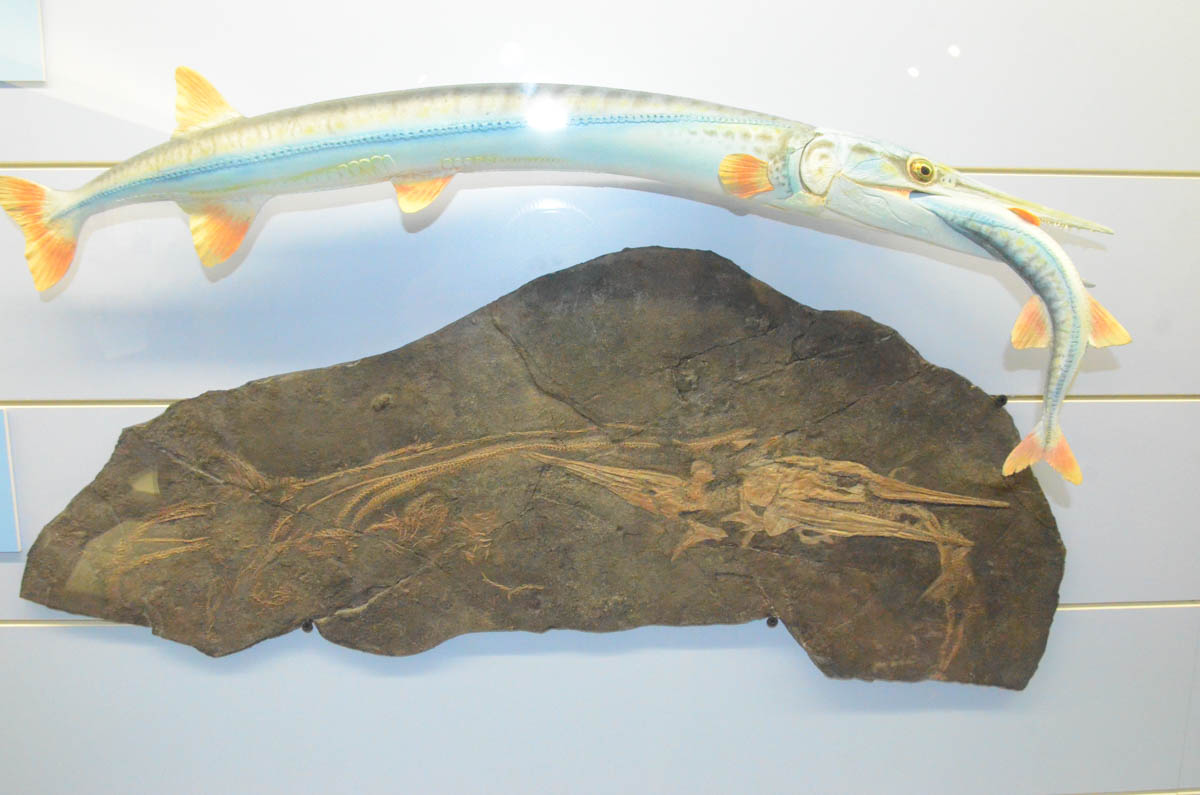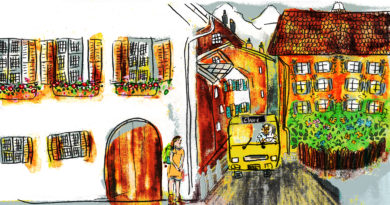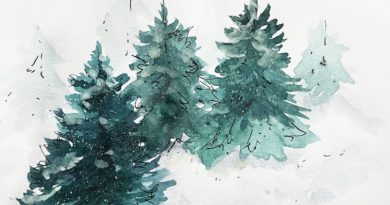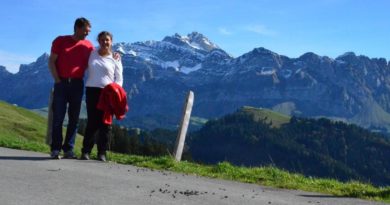Dinosaurs in Switzerland
A trip to the Unesco World Heritage site Monte San Giorgio and the Fossil Museum in Merida, Ticino
There is a lot of talk about Earth’s facts versus “alternative facts” lately; and climate change, species evolution, and extinction are in the news. This is the perfect time to travel with your family to one of Switzerland’s best-known areas that documents Earth’s changing past and catastrophic history: Monte San Giorgio. This UNESCO World Heritage Site in the Southern Alps is also a spectacular area to hike and to enjoy the culture of Switzerland’s Italian-speaking people.
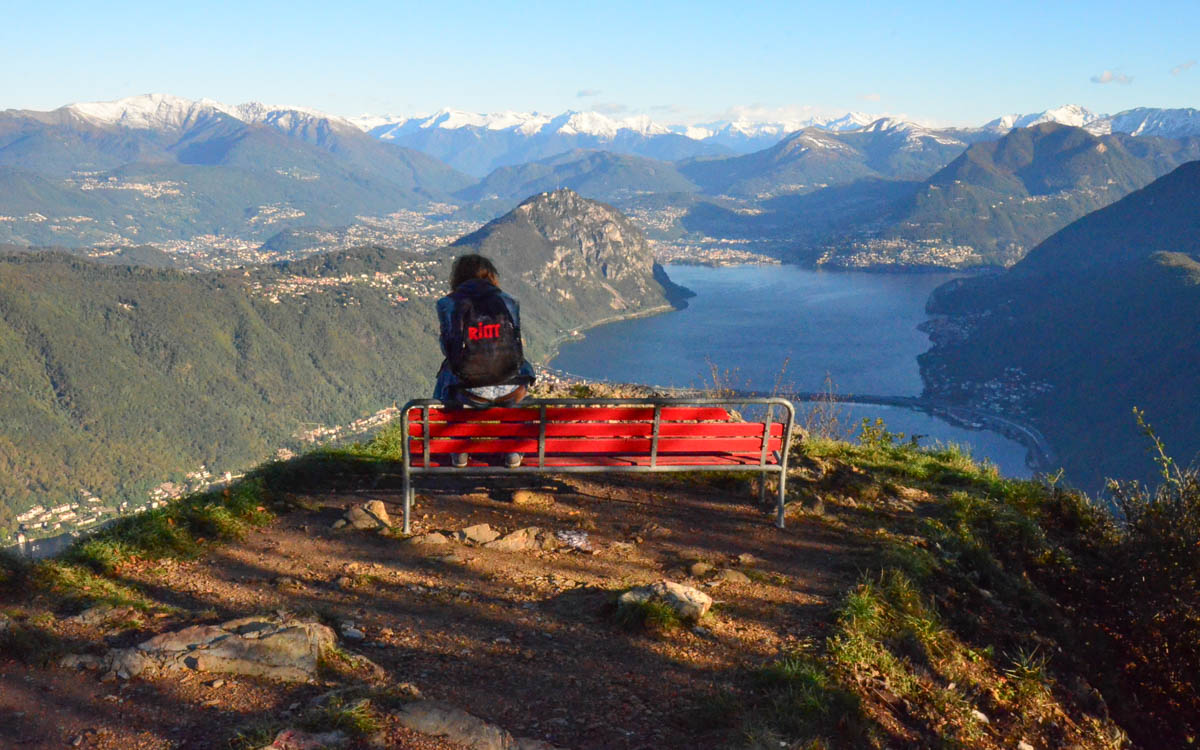
Hiking the area in summer and fall is incredible. The trails are very well maintained and the scenery is splendid. You can catch views of Monte Rosa (4,634 m) and Lake Lugano. We obtained information from geologic and topographic maps before starting out in Meride. There is information at tourist information centers in the area cities such as Lugano, but you can get all the information you need about trails via internet search machines. Here is a good, general site that provides information about walking from Meride to the summit of Monte San Giorgio and other trails. The site has a link to the Swiss government topography map of the area; scroll down just a bit to “Helpful hints: Historic trail on Monte San Giorgio.”
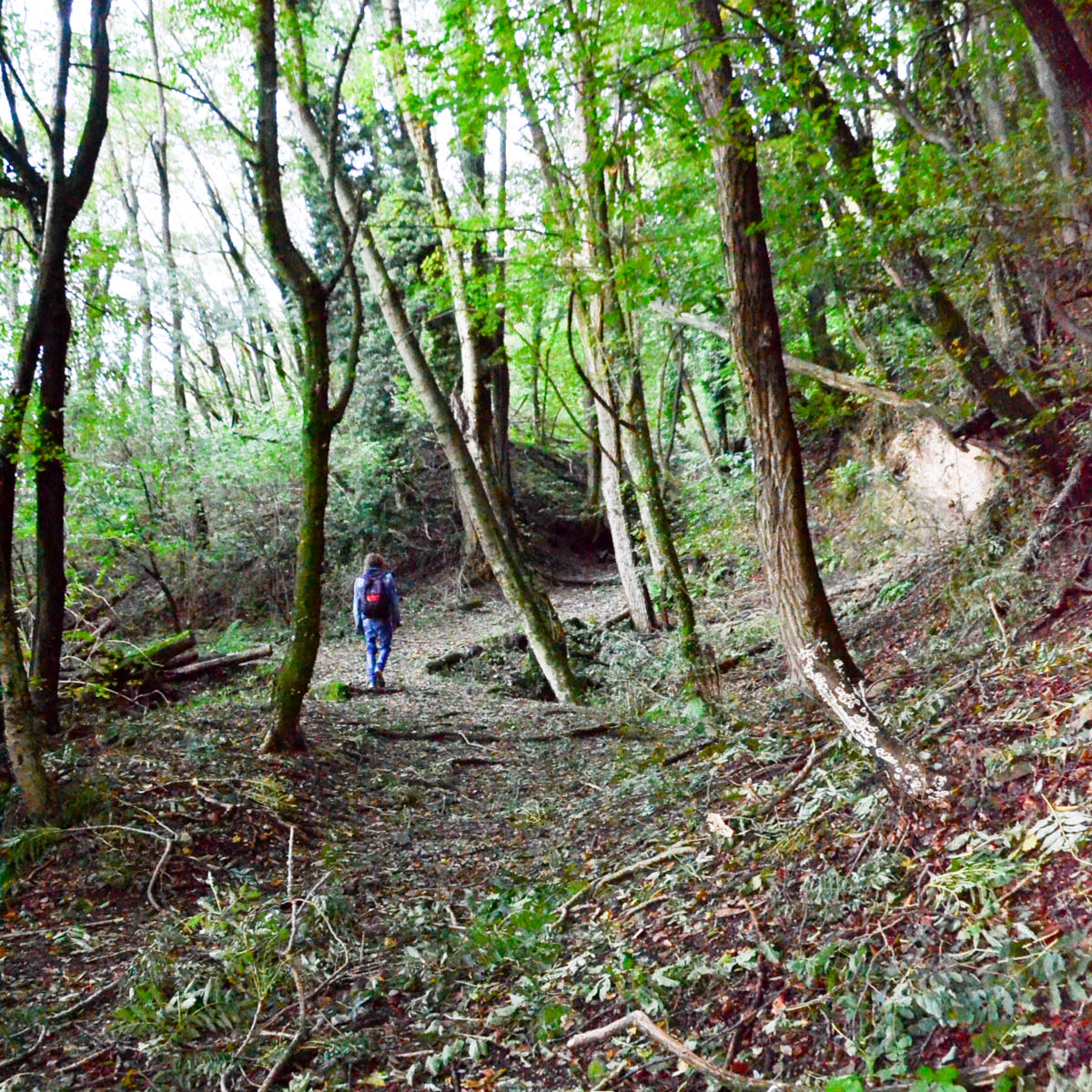
The mountain contains one of the most important fossil finds in the world and is still excavated and studied today. The fossil-rich areas are off-limits, but you might still come across minor fossils on the trails. You should remember that the area is protected, so try not to disturb the environment and don’t remove anything from the park (tough rules to follow if you or your kids are rock hounds or fossil hunters). On our last outing to the area we happened across paleontologists from the University of Zurich working in the field, a real possibility if you visit the area in the warm summer months. The Paleontology Museum at the University of Zurich has fossil examples from this area on display. More importantly, the fossil finds and their significance are on display in the Museum of Fossils from Monte San Giorgio in Meride, which I discuss below. This is an incredible research and fact-based museum for all ages.
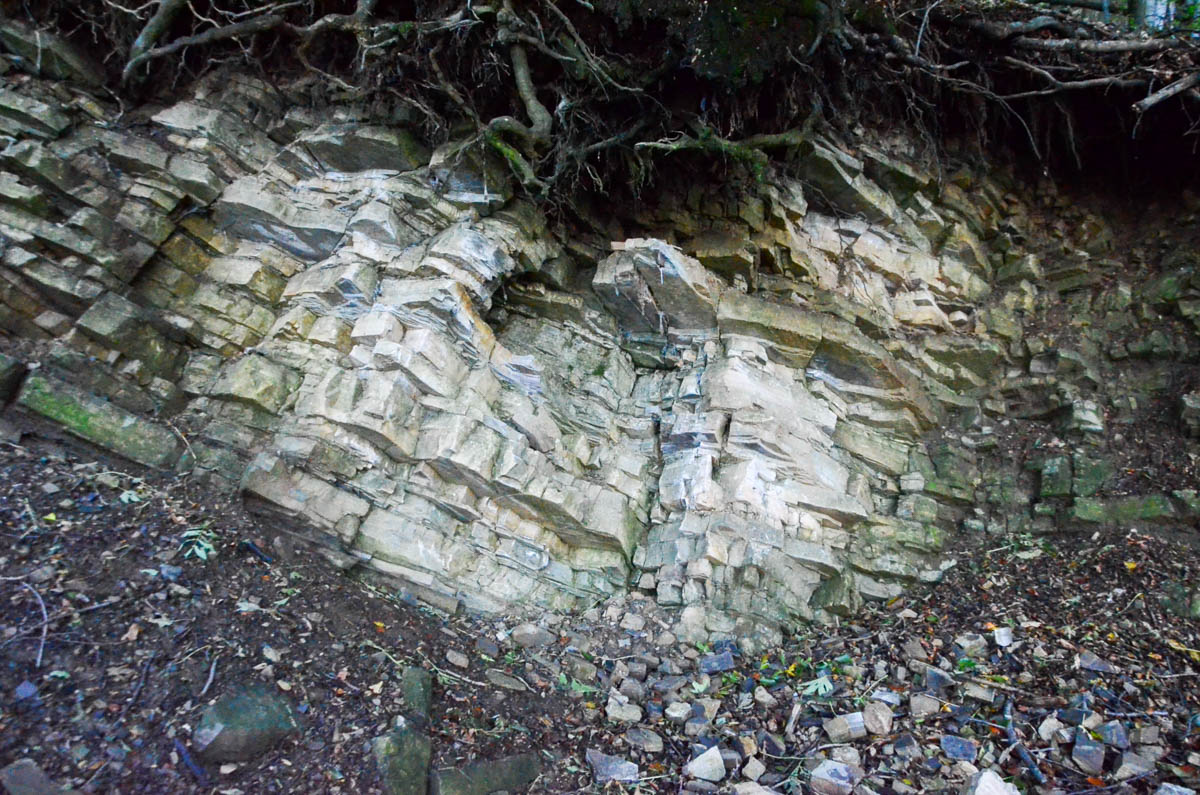
The Museum of Fossils from Monte San Giorgio is located in the small, picturesque village of Meride. Both you and your school-age children will enjoy this museum, which includes guided tour possibilities and has its exhibits in English. The museum covers the timespan representing the heyday of dinosaurs in this region. Some examples are Ticinosaurus, a land-living dinosaur, and marine reptiles such as Ceresiosaurus, measuring up to three meters in length, and Neusticosaurus (30–100 cm) on which Ceresiosaurus fed. Other reptiles, such as Serpianosaurus, Lariosaurus, and Nothosaurus have been found in the former lagoon-type environment preserved as marine sedimentary rocks of the present-day mountain and exhibited in the museum. Our favorite fossil is Tanystropheus, not just due to its great size – five meters in length – but because it has a neck which resembles that of a giraffe. There is also a collection of plant remains and a history of quarrying in the area, as well as an interesting display on the production of medicine from tar resources mined until recently.
This is truly one of the best small museums that I have seen in Switzerland. The building was designed by the Swiss architect from Ticino, Mario Botta – another a good reason for a visit. Check out the museum’s website before your visit. There are some good, short, general videos about the area and specific projects that are worth viewing, for example, the video entitled “I’m MCSN 5758, a Neusticosaurus” or, “Monte San Giorgio – A Story of 240 Million Years.”
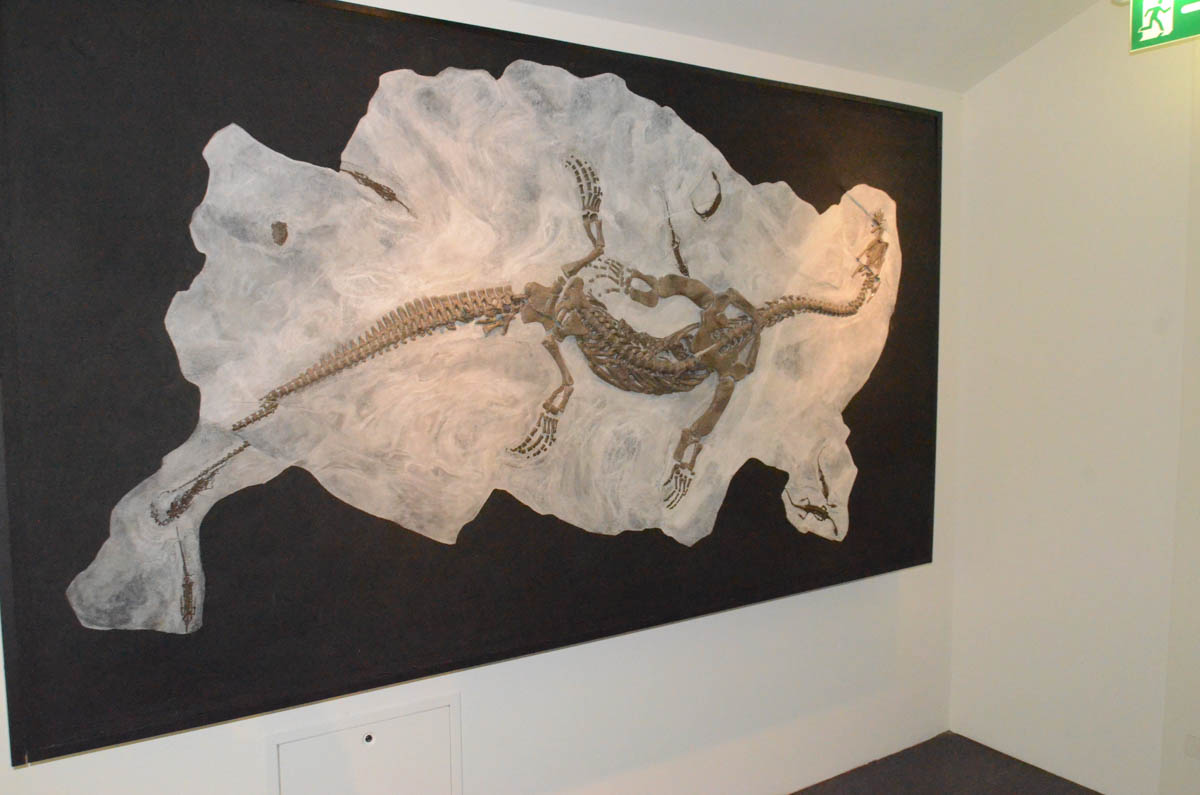
During our visit, the museum staff were very helpful and supplied extra information in English, which helped us to understand the exhibit in greater depth. The museum is structured with each level representing a different time span and therefore different fossil groups, environments and climates, displaying a history of the area and its organisms. It is this aspect of Monte San Giorgio which makes it so scientifically important: scientists can learn about the evolution of species over time! The explanations are very detailed, and the exhibits are modern and educational as well as creative. We spent three hours in the museum after hiking five hours on a trail across the mountain.
Hiking tips for this area
Before starting your hike, make sure you have proper hiking shoes and clothing and are informed about weather. Also make sure you have enough water and snacks and a first aid kit. Mobile phone connections are not always available in the mountains, so let someone know where you are going and when you will return. Also, beware of snakes, because there are two poisonous species that inhabit Ticino – the common European viper and the asp viper. They are uncommon but a real possibility in the summer.
Museum information and links:
Monte San Giorgio World Heritage Site
Museum of Fossils from Monte San Giorgio
Via Bernardo Peyer 9
6866 Meride
Tel: + 41 (0)91 640 00 80
Fax: +41 (0)91 646 17 37
info@montesangiorgio.org
www.montesangiorgio.org
Opening hours: 09:00 – 17:00; closed Mondays, but open Easter Monday and Pentecost
Ticket: Adults CHF 12, children younger than 6 free, students CHF 8
Family ticket: 2 adults + 2 children from 6 to 16, CHF 25
By Dr. Teresa Bingham Mueller
Teresa is a geologist and educator who currently works as an instructor and science editor. She has three sons ages 18, 21, and 34, and two grandchildren.
Photos by Daniel Mueller

